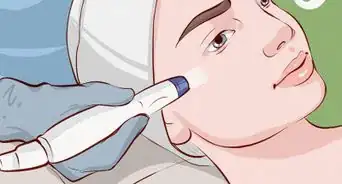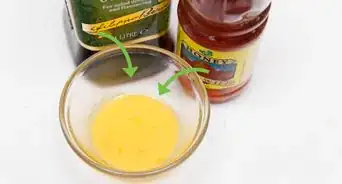This article was co-authored by Adarsh Vijay Mudgil, MD. Dr. Adarsh Vijay Mudgil is a board certified Dermatologist, Dermatopathologist, and the Owner of Mudgil Dermatology, a state-of-the-art dermatology practice based in New York, New York. As one of the few dermatologists in the area to achieve board certification in both dermatology and dermatopathology, Dr. Mudgil specializes in all aspects of medical, surgical, and cosmetic dermatology. He received his Bachelor's degree with Phi Beta Kappa honors from Emory University and earned his Doctor of Medicine (MD) with Alpha Omega Alpha honors from the Stony Brook University School of Medicine. In medical school, Dr. Mudgil was among a handful of students nationwide to receive a coveted Howard Hughes Medical Institute Fellowship and Scholarship. He then completed his residency in dermatology at the Mount Sinai Medical Center in Manhattan, where he served as chief resident. Additionally, Dr. Mudgil went on to complete a fellowship at the prestigious Ackerman Academy of Dermatopathology. He is a fellow of the American Academy of Dermatology, the American Society for Dermatologic Surgery, and the American Society of Dermatopathology. Dr. Mudgil is also a member of the Mount Sinai School of Medicine teaching faculty.
There are 7 references cited in this article, which can be found at the bottom of the page.
This article has been viewed 401,950 times.
Skin polishing generally refers to any form of exfoliation which removes the uppermost layer of skin, but can specifically refer to "microdermabrasion," a cosmetic procedure intended to diminish aging and blemishes to the skin. As with all medical treatment, please consult a dermatologist before beginning this or any other skin polishing regimen.[1]
Steps
Getting Your Skin in Top Shape
-
1Up your water intake before polishing. It's important your skin is as hydrated and healthy as possible when you go into the polishing process. To help with this, up your water intake. Aim to drink anywhere between 10 to 12 glasses of water a day. Do this for about a week before you plan to polish your skin.[2]
-
2Eat foods rich in vitamin E and A. Vitamin E and A can help with your overall skin health. While you work your way up to the skin polishing, eat things like wheat germ, soy, nuts, eggs, and yellow, orange, and dark green vegetables.[3] This will help your skin tolerate the polishing well.[4]Advertisement
-
3Moisturize daily. In order to keep your skin healthy and also diminish signs of wear or aging, it is important to moisturize each day immediately following your shower or bath. This helps keep your skin extra smooth and in optimal condition for polishing. Be sure to use a body oil or lotion daily that is dermatologist recommended.[5] If you would prefer something less processed, try some of the following:
- Olive oil
- Unpasteurized and unfiltered coconut oil
- Shea Butter
-
4Go soap-free. Soap is alkaline in nature and, especially for sensitive skin, can cause irritation, flaking, and cracking of the skin. To prime your skin for polishing, avoid soap. Go for non-soap cleansers instead or simply rinse off unwanted dirt and debris with water.[6]
Selecting a Polish
-
1Choose a store bought polish. You can use a skin polish from a beauty salon or buy one online. Store bought polishes tend to be pricey, and they may not work for all skin tones, but it can save you the hassle of making one yourself.
- As some polishes may irritate some skin types, try buying a sample size first and testing it on a small patch of skin to make sure you react to it properly. If you have a bad reaction, try a different polish or make one at home from natural ingredients.
-
2Try a baking soda polish. Mix one part baking soda with one part of your regular face wash to make a baking soda rub. The natural grains in baking soda help remove dead skin cells and replenish and polish your skin. Use enough baking soda/face wash to form a thick paste that can be applied all over your body.[7]
-
3Use sea salt, olive oil, lemon juice, and lavender oil. Mix four tablespoons of sea salt, two tablespoons of olive oil, one tablespoon of lemon juice, and half a teaspoon of lavender oil. This mixture can help cleanse the skin and also has a pleasant odor.[8]
- Avoid using this mixture if your skin is sensitive to essential oils.
-
4Mix brown sugar with jojoba oil. Mix a cup of brown sugar with half a cup of jojoba oil. Also, add in a tablespoon or orange juice and five vitamin E capsules. This mixture is great if your skin is dry, as jojoba oil is a natural moisturizer.[9]
-
5Try a mixture of apples and sugar. Mix two tablespoons of granulated and brown sugar together. Then, add about a tablespoon of apple pulp and a quarter tablespoon of cinnamon. Apples provide a great source of vitamin A and B, which are great for skin health.[10]
Applying Your Polish
-
1Open your pores with a hot bath. Before you apply your skin polish, a nice bath is necessary. This helps relax you and open up your pores, allowing your skin to be adequately cleansed and polished.[11]
- There is no precise time frame for you to be in the bathtub, but 20 minutes should be adequate.
-
2Apply the polish to your face. Dab the polish onto your face, focusing on the cheeks, chin, elbows, and nose. Use your fingers to rub the polish into your face in circular motions until the polish is distributed evenly throughout your face.[12] Rinse your face off with warm water before proceeding.
-
3Exfoliate rough areas with a pumice stone. Before applying your polish to rough areas, you should remove callouses and dead skin. This can be done with the assistance of a pumice stone, which you can purchase at most department stores. Gently rub the stone against rough areas, like the heels and elbows. Apply enough pressure to wear down callouses and rough skin, but not so much pressure that you feel in pain.[13]
-
4Apply polish all over the body in gentle, circular motions. You want to make sure all your skin is targeted during the skin polishing process. Work the polish in throughout your body. It can help to move from head to toes or vice vera. When applying your circular motions, use some force so you can lift dead skin. However, do not push to the point you feel pain.[14]
- If you have any areas on your body that are extra sensitive, avoid applying skin polish here.
EXPERT TIP“Body polishing is used to give the skin a fresh, smooth appearance. It can improve sun damage, dryness, and skin texture.”
Laura Martin is a Licensed Cosmetologist in Georgia. She has been a hair stylist since 2007 and a cosmetology teacher since 2013.
Laura Martin
Licensed Cosmetologist Laura Martin
Laura Martin
Licensed Cosmetologist -
5Treat rough areas. After polishing your full body once, revisit the areas you treated earlier with the pumice stone. Apply a bit more polish here, just to exfoliate and moisturize the skin a bit more. Rough areas tend to need a little more care during the skin polishing process.[15]
-
6Rinse off the polish. You can rinse in the bath or shower, using warm water. Make sure you get any traces of polish off your skin. When you're done, gently pat your body dry with a towel.[16]
-
7Moisturize your body. Skin polish can help remove dead skin cells, but it can also leave your skin feeling a little dry. Apply your regular moisturizer all over your body after skin polishing.[17]
- If you have body-specific moisturizers, such as moisturizers for your feet and face, use these after polishing.
-
8Polish your skin only once a week. As skin polishing is an intense form of exfoliation, it should not be done every day. Exfoliation is generally recommended to be done only once a week.[18] If your skin reacts negatively to polishing, cut back that amount further.
Expert Q&A
Did you know you can get expert answers for this article?
Unlock expert answers by supporting wikiHow
-
QuestionWhat is the use of body polishing?
 Laura MartinLaura Martin is a Licensed Cosmetologist in Georgia. She has been a hair stylist since 2007 and a cosmetology teacher since 2013.
Laura MartinLaura Martin is a Licensed Cosmetologist in Georgia. She has been a hair stylist since 2007 and a cosmetology teacher since 2013.
Licensed Cosmetologist
-
QuestionWhat is a skin peel treatment?
 Laura MartinLaura Martin is a Licensed Cosmetologist in Georgia. She has been a hair stylist since 2007 and a cosmetology teacher since 2013.
Laura MartinLaura Martin is a Licensed Cosmetologist in Georgia. She has been a hair stylist since 2007 and a cosmetology teacher since 2013.
Licensed Cosmetologist
-
QuestionWhat is done in skin polishing?
 Laura MartinLaura Martin is a Licensed Cosmetologist in Georgia. She has been a hair stylist since 2007 and a cosmetology teacher since 2013.
Laura MartinLaura Martin is a Licensed Cosmetologist in Georgia. She has been a hair stylist since 2007 and a cosmetology teacher since 2013.
Licensed Cosmetologist
References
- ↑ https://www.aad.org/stories-and-news/news-releases/evaluate-before-you-exfoliate
- ↑ http://www.zmescience.com/other/offbeat-other/skin-polish-home/
- ↑ Adarsh Vijay Mudgil, MD. Board Certified Dermatologist & Dermatopathologist. Expert Interview. 08 October 2020.
- ↑ http://www.zmescience.com/other/offbeat-other/skin-polish-home/
- ↑ Adarsh Vijay Mudgil, MD. Board Certified Dermatologist & Dermatopathologist. Expert Interview. 08 October 2020.
- ↑ http://dermnetnz.org/treatments/cleansers.html
- ↑ http://www.bhtips.com/2014/02/best-5-homemade-skin-polish-recipes.html
- ↑ http://www.bhtips.com/2014/02/best-5-homemade-skin-polish-recipes.html
- ↑ http://www.bhtips.com/2014/02/best-5-homemade-skin-polish-recipes.html
- ↑ http://www.bhtips.com/2014/02/best-5-homemade-skin-polish-recipes.html
- ↑ http://www.bhtips.com/2014/02/best-5-homemade-skin-polish-recipes.html
- ↑ https://www.youtube.com/watch?v=7CNWoMRlRiw
- ↑ http://www.zmescience.com/other/offbeat-other/skin-polish-home/
- ↑ http://www.bhtips.com/2014/02/best-5-homemade-skin-polish-recipes.html
- ↑ http://www.bhtips.com/2014/02/best-5-homemade-skin-polish-recipes.html
- ↑ http://www.bhtips.com/2014/02/best-5-homemade-skin-polish-recipes.html
- ↑ http://www.bhtips.com/2014/02/best-5-homemade-skin-polish-recipes.html
- ↑ https://www.glamour.com/story/whats-the-deal-with-exfoliatin
About This Article
Before polishing your skin, soften dry and dead skin by applying a moisturizer, such as olive oil. For best results, put on warm clothes for between 20 and 40 minutes so your skin pores open up. In the bath, put soap-free cleanser on an exfoliating cloth and rub your skin in a circular motion. For especially dry skin, like on your heels, try using a pumice stone. After rinsing with water and drying off, finish by buffing your skin with cotton and polishing with silk gloves. For tips on improving your skin quality, including foods you should eat, keep reading! To learn more from our Cosmetologist co-author about how to make different polish recipes or what vitamins to take, keep reading the article!
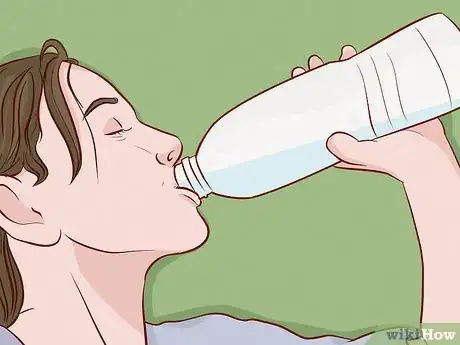



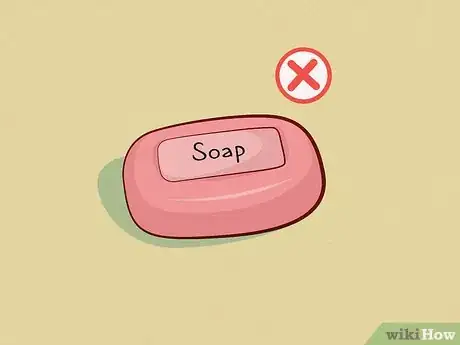
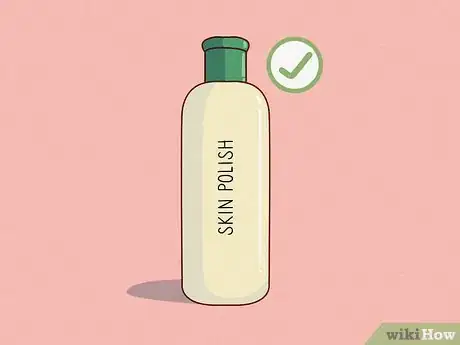
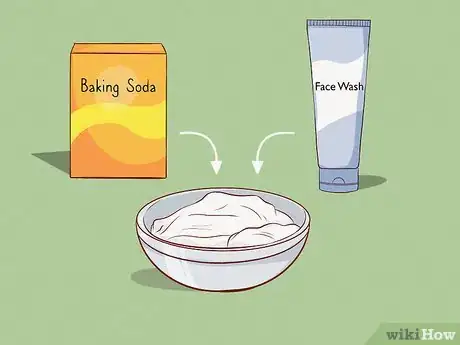
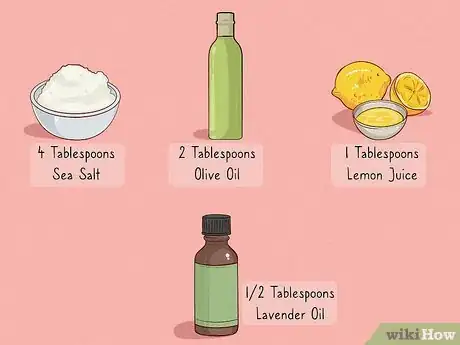
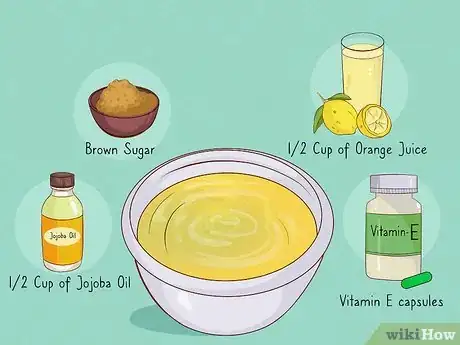
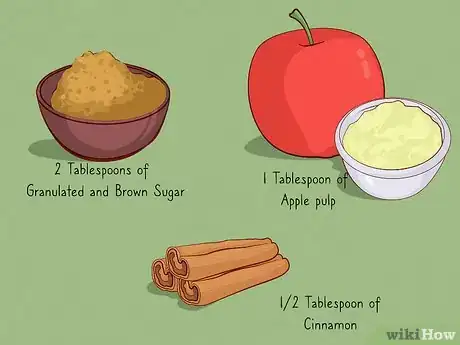

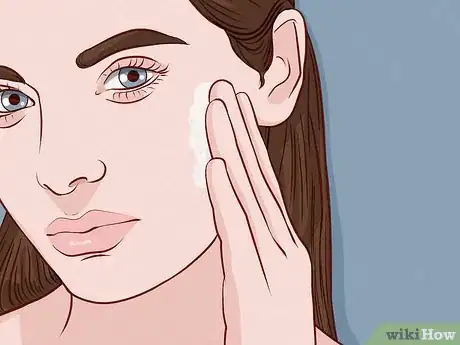
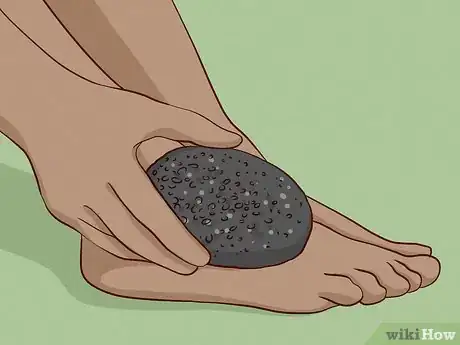
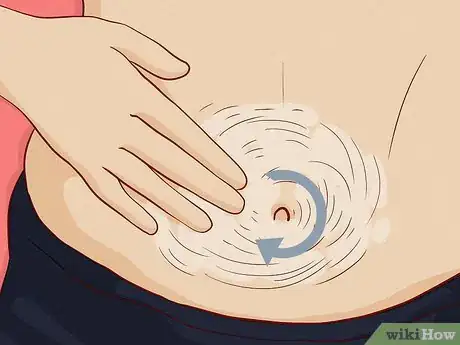

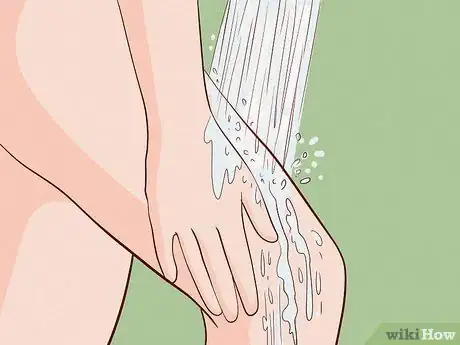
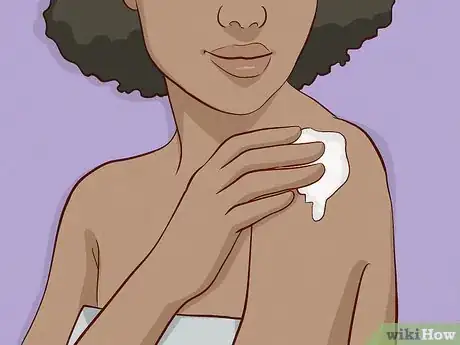
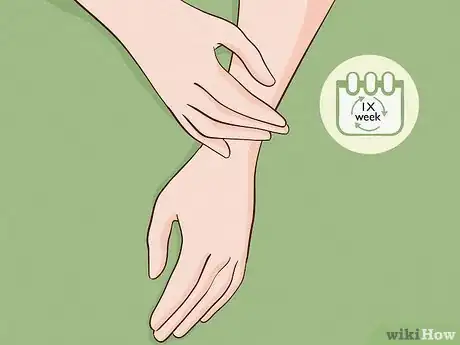


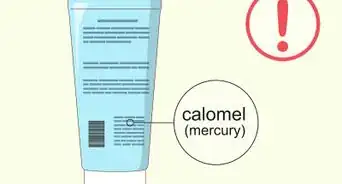


-Step-12.webp)


